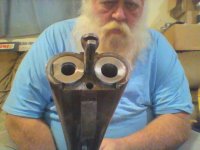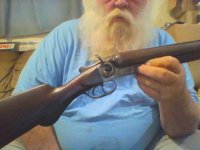Some folks tout "re-proving" as the solution. But if you submit a nice old gun to be re-proved, and it blows, you are left with a mass of junk - safe, but junk. I would rather retire an old gun to the wall than be left with scrap iron.
A proof test is simply a test with an over pressure round. Generally the load is about 20 to 30% over pressure. The more over pressure rounds a weak barrel made of substandard materials is exposed to, the sooner it will blow with standard rounds.
People have screwball ideas about proof tests. I have an Dope Bag article from the 1950's that I recently re read. The author told the American Rifleman of a "proof test" he had conducted on a Japanese rifle. He had filled a case with bullseye pistol powder, fired it, and the rifle was intact! He wrote the American Rifleman asking their opinion about his clever proof test. They told him the rifle was probably unsafe to shoot further.
American's have this screwy belief that Proof Testing is supposed to be a destructive test. I think they get this idea from Hatcher's Notebook, where he describes Springfield Armory behaviors during the period of the single heat treat receivers. SA did not have pyrometers in the forge shop or heat treating ovens. SA also did not have an incoming material inspection. Receivers made of defective materials and inconsistent heat treatments passed proof tests but blew in service. Instead of Springfield Armory figuring out why they were making defective rifles, they simply decided to increase the proof pressures of their proof test. Which blew up more rifles, but did not fix the problems of a chaotic and uncontrolled production line. I believe that people read this and somehow get the idea that proof testing is supposed to blow the gun up, which is of course, nuts. No manufacturer would set up a factory, pay all the workers, and expect to make money if they blew up all the product at the end of the production line.
The Germans have a severe Proof Test program. You have to have the gun tested each and every sale. That includes sales between individuals. They inspect things, gauge, test the features to see if everything works. Prior to 1968, if the gun failed any part of the Proof test, such if the safety was dysfunctional, the whole firearm was destroyed. The whole purpose of this is to send old and dangerous guns to the scrap yard. The law was later changed so that only the offending part was ruined, but still, the gun had not passed proof and therefore could not be sold. I will bet when it comes to twist barrels, the proof inspector examines the barrel for pin holes with a magnifying glass, and if he finds them, the barrel is crushed right then and there.


